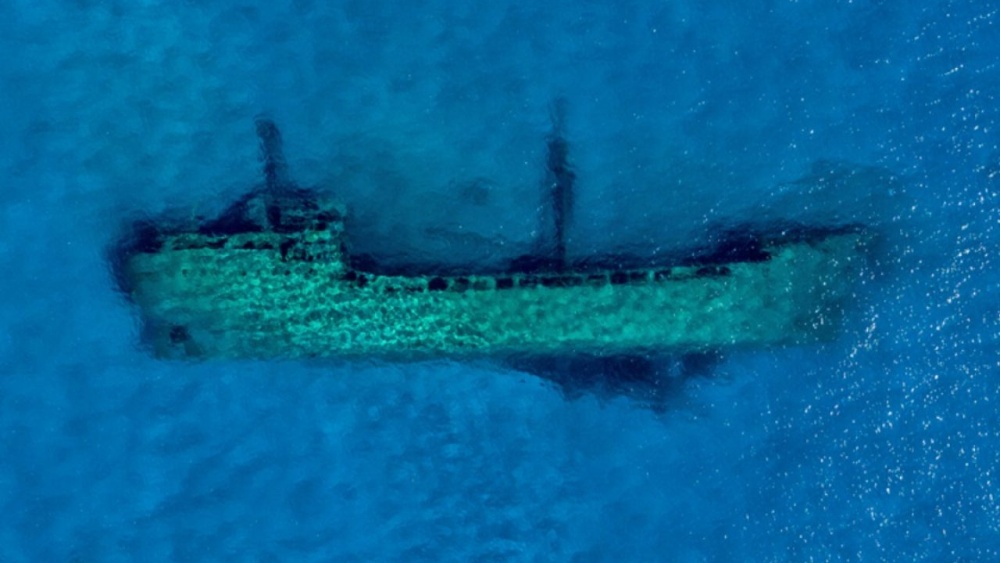Lake Superior, Lake Michigan, Lake Huron, Lake Ontario, and Lake Erie – or the Great Lakes, as you may know them – hold the secret of an estimated number of 8,000 shipwrecks. Because many of these ships were never found, the exact number of wrecks in the Lakes is still unknown.
The five lakes are notorious for their sudden and severe storms. And since sonar and radio weren’t discovered until the 19th century, maritime disasters were frequent on the lakes: over 30,000 lives have been lost to the watery graves of the Great Lakes since people started sailing on them in the 17th century.

Compared to ships that have sunk in the oceans and seas, those lost in The Great Lakes are in very good condition. The cold water temperatures and the freshwater nature of the lakes are the reason why the wrecks are so well preserved, despite being underwater for over centuries, in some cases.

Together, the shipwrecks make up a collection of ship-types that span 200 years of Great Lakes shipping, reflecting the transition in ship architecture and construction, from wooden schooners to early steel-hulled steamers, as well as certain types of ships unique to the Great Lakes.

One of the greatest concentration of shipwrecks lies near Thunder Bay, aka. “Shipwreck Alley”, beneath Lake Huron. It has acquired the nickname “Shipwreck Alley” for a good reason: it is estimated that over 100 shipwrecks may lie inside the current boundaries of the area. Known wrecks date from 1849 and the last ship to sink near Thunder Bay was the Nordmeer in 1966.


Experts estimate that around 1,500 shipwrecks are located in the waters of Lake Michigan. The clear springtime waters of the lake are so clear that aircrafts flying over its surface can easily spot shipwrecks deep below the water’s surface.

Although most of the vessels lost in Lake Michigan have been the victims of raging winds and currents that pounded them into kindling along the shoreline, many more have sunk in deep waters far offshore. So far, only 300 shipwrecks have been found beyond the surf line in Lake Michigan, but many more are waiting to be discovered.

According to Sean Ley, development officer for the Great Lakes Shipwreck Museum, Lake Superior is perhaps the most dramatic lake, although Lake Erie and Lake Huron have a higher number of shipwrecks beneath them. It is the largest water of the five Great Lakes and has currents that sweep across from the northwest to the southeast end of the lake with a tremendous force.
Well over 200 of the 550 known wrecks in Lake Superior are located on the shoreline of Whitefish Point, which has become known as the “Graveyard of the Great Lakes”. The reason there are so many wreckages there is that there are no natural harbors for ships to hide when there are huge storms raging.

One of the best-known Lake Superior shipwrecks is the Gunilda, which was a luxury steam yacht constructed in 1897. At the time of her demise, the Gunilda was owned by William L. Harkness, a rich businessman from New York. When traveling through the various islands and shoals of the lake, Harkness chose not to hire a local pilot to guide his ship. Without accurate knowledge of the region, the Gunilda ran aground on the Northern side of the lake, raising her bow high out of the water. As Harkness refused to pay for towing the Gunilda, the ship sank in the middle of August 1911.
Given the extreme depth of most of Lake Superior’s shipwrecks, the sites remain undisturbed and the Gunilda is no exception. The interior of the sunken ship still looks like it was abandoned just yesterday.
The tragedy of the Fitzgerald is one of the biggest mysteries in the history of the lakes because it was so recent and no one knows why exactly the ship was lost.
At the request of family members surviving her crew, Fitzgerald’s 200 lb. bronze bell was recovered by the Great Lakes Shipwreck Historical Society on July 4, 1995. The bell is now on display in the Great Lakes Shipwreck Museum as a memorial to her lost crew.

Thanks to modern shipping equipment and safety procedures, sailing has become a lot safer in the last decades. This is proved by the fact that there have been no major shipwrecks on the Great Lakes since the tragedy of the Fitzgerald in 1975.
However, the aforementioned Sean Lay says that the danger of a shipwreck is always there:
“The danger is always there. And the awareness of the danger keeps you on your guard so that you are a little more cautious. One old gentleman once told me, constant vigilance is the price you pay for traveling on The Great Lakes.”
Sources: 1, 2, 3, 4, 5, 6, 7
